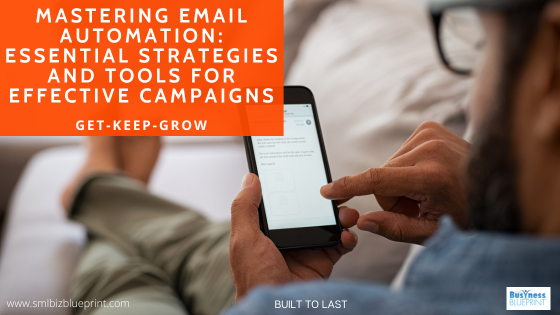Mastering email automation is a cornerstone for engaging audiences effectively and scaling communication efforts.
From selecting the right tools that streamline your campaigns to segmenting your audience for maximum relevance, this post is your go-to resource for elevating your email marketing game.
We’ll explore the significance of trigger-based emails, the magic of personalisation at scale, and the metrics that matter in measuring your success. Whether you’re a seasoned marketer looking to refine your strategy or a newcomer eager to learn the ropes, this guide promises actionable insights and best practices to transform your email marketing into a powerful engine of growth and engagement.
Join us as we navigate the essential components of email automation, unlocking strategies to captivate your audience and achieve remarkable results.
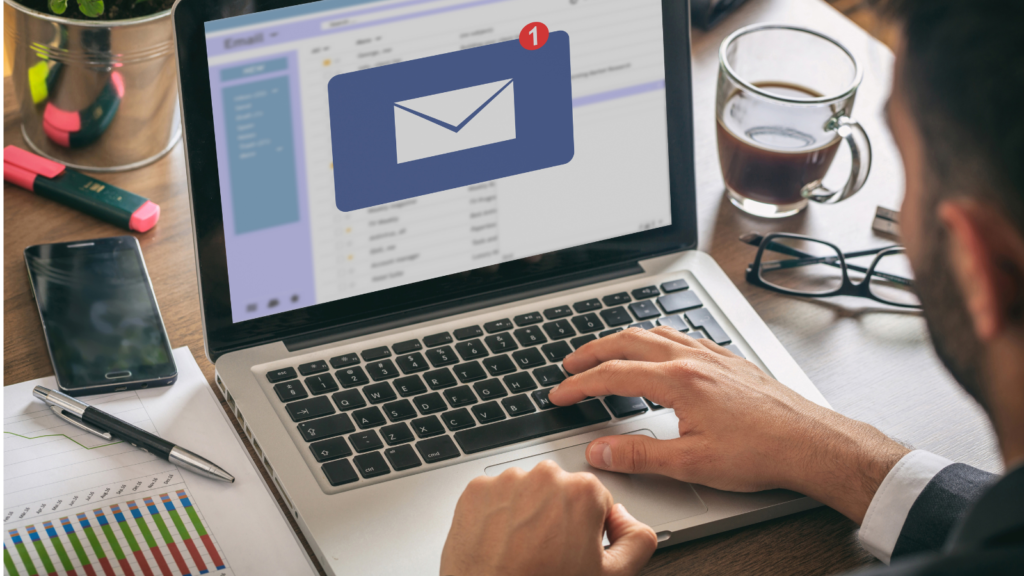
#1 Unlocking the Power of Email Automation Tools
In email marketing, the right automation tools are not just facilitators but game-changers.
The ability to send the right message to the right person at the right time, without manual intervention every step of the way, can significantly amplify the effectiveness of your campaigns.
Choosing Your Arsenal with Precision
The landscape of email automation tools is vast, with each platform offering unique features and capabilities. Platforms like Mailchimp shine for their user-friendly interfaces and robust analytics, making them ideal for small to medium-sized businesses.
On the other hand, HubSpot and Salesforce Marketing Cloud offer advanced CRM integration and customisation options, catering to more complex marketing needs.
Key Features to Look For:
While the bells and whistles vary from one tool to another, certain core features are non-negotiable for effective email automation:
Segmentation and Personalization:
Segmenting your audience based on behaviour, preferences, and demographics is crucial. This ensures that your emails resonate personally, increasing engagement and conversion rates.
Trigger-Based Email Sequences:
Look for tools that allow you to set up automated emails triggered by specific actions, such as website visits, sign-ups, or purchases. This feature enables timely and relevant communication, enhancing the customer experience.
Analytics and Reporting:
Understanding the performance of your email campaigns is key to optimization. Opt for tools that provide comprehensive analytics, including open rates, click-through rates, and conversion metrics, to gauge the effectiveness of your strategies.
Integration Capabilities:
In today’s interconnected digital ecosystem, your email automation tool should seamlessly integrate with other tools and platforms used by your business. Whether it’s your CRM system, social media platforms, or analytics tools, integration enhances efficiency and provides a holistic view of your marketing efforts.
User Experience and Support:
The platform’s usability and the quality of customer support are critical, especially when you’re looking to resolve issues or need guidance on best practices quickly. Tools with intuitive interfaces, extensive knowledge bases, and responsive support teams can significantly ease the learning curve and improve workflow efficiency.
Security and Compliance:
With the increasing emphasis on data protection and privacy, ensure your chosen tool complies with regulations like GDPR. This safeguards your business against legal complications and builds trust with your audience.
The right email automation tool is a powerful ally in your marketing arsenal, empowering you to create more personalised, timely, and effective email campaigns. By focusing on these critical considerations, you can unlock the full potential of email automation, driving engagement and fostering lasting relationships with your audience.
#2 Tailoring Your Audience for Maximum Engagement
At the heart of every successful email automation campaign lies a well-segmented audience.
Tailoring your messages to meet your subscribers’ specific needs and interests elevates the user experience and significantly boosts the performance metrics of your campaigns.
Understanding Your Audience:
The first step in segmentation is gathering insights about your subscribers. This can involve analysing their past interactions with your brand, including purchase history, content preferences, and engagement patterns.
Tools offering robust data collection and analysis features can be invaluable in this process, allowing you to categorise your audience precisely.
Criteria for Segmentation:
There are myriad ways to segment an email list, but focusing on a few key criteria can yield the most impactful results:
Demographic Segmentation: This involves dividing your audience by age, gender, location, and occupation. For instance, a fashion retailer might send different email content to teenagers than adults.
Behavioural Segmentation: Here, you segment based on subscribers’ actions, such as the pages they visit on your website, the products they purchase, or how frequently they engage with your emails. This type of segmentation is powerful for triggering personalised automated emails, like cart abandonment reminders or product recommendation emails.
Engagement Level: Segmenting your audience based on their engagement level (e.g., active, inactive, new subscribers) allows you to tailor your messaging strategy. For example, send a re-engagement campaign to inactive subscribers or a special welcome series to new ones.
Best Practices in Segmentation:
To effectively segment your email list, consider the following best practices:
Start Simple: Begin with broad segments and gradually refine them as you gather more data and insights.
Use Dynamic Segmentation: Leverage email automation tools that automatically update segments based on subscriber behaviour and interactions.
Test and Iterate: Regularly test different segmentation strategies to find the best for your audience and objectives. A/B testing can be particularly useful here.
In conclusion, mastering segmentation in email automation is not just about dividing your list into different groups. It’s about understanding your audience profoundly and leveraging that understanding to deliver content that resonates personally.
By applying these segmentation strategies, you’re not just sending emails but engaging in meaningful conversations that drive actual business results.
#3 Initiating Timely Conversations with Automated Emails
The essence of a successful email automation workflow lies in its ability to deliver the right message at precisely the right moment.
This is where the concept of ‘trigger points’ comes into play, acting as the catalyst for automated email sequences that are relevant and timely.
This section explores the strategic use of triggers in email automation, guiding you through setting up triggers that resonate deeply with your audience and enhance their experience with your brand.
The Power of Triggers:
Trigger-based emails are initiated by specific actions your subscribers take or changes in their relationship with your brand. These can range from a new subscription to a purchase or inactivity over a certain period.
The beauty of these triggers is their ability to create moments of engagement that feel personal and immediate.
Common Triggers for Email Automation:
Welcome Emails: Triggered by new subscriptions, these emails are your first touchpoint with new subscribers and set the tone for your relationship.
Transactional Emails: These are triggered by specific transactions, such as purchases or bookings, and include order confirmations, receipts, and shipping updates.
Re-engagement Emails: Triggered by inactivity, these emails aim to rekindle the subscriber’s interest in your brand.
Milestone Emails: Celebrating subscriber milestones, such as anniversaries or birthdays, with personalised messages can enhance brand loyalty.
Setting Up Effective Triggers
Define Clear Objectives: For each trigger, clearly understand the action you want the recipient to take. This clarity will guide the content and design of your emails.
Use Data Wisely: Leverage subscriber data to create deeply personalised triggers. For example, using purchase history triggers a replenishment email when a product is likely running low.
Timing is Key: The effectiveness of a triggered email often hinges on its timing. For instance, a cart abandonment email might be most effective if sent a few hours after the abandonment.
Optimising Trigger-Based Emails:
Continuous Testing: Regularly test and refine your triggers based on performance metrics and subscriber feedback. This might involve adjusting the timing of emails or the conditions that trigger them.
Personalisation: Go beyond using the subscriber’s name. Personalize content based on their behaviour, preferences, and previous interactions with your brand.
Monitor and Adapt: Keep an eye on how your triggered emails are performing and be ready to adapt your strategy based on evolving subscriber behaviours and preferences.
In essence, trigger points in email automation are not just about automating communication; they’re about making each interaction feel uniquely tailored to the moment and the individual.
By thoughtfully setting up and continually optimising these triggers, you can transform routine emails into meaningful touchpoints that delight your subscribers and drive tangible results for your brand.
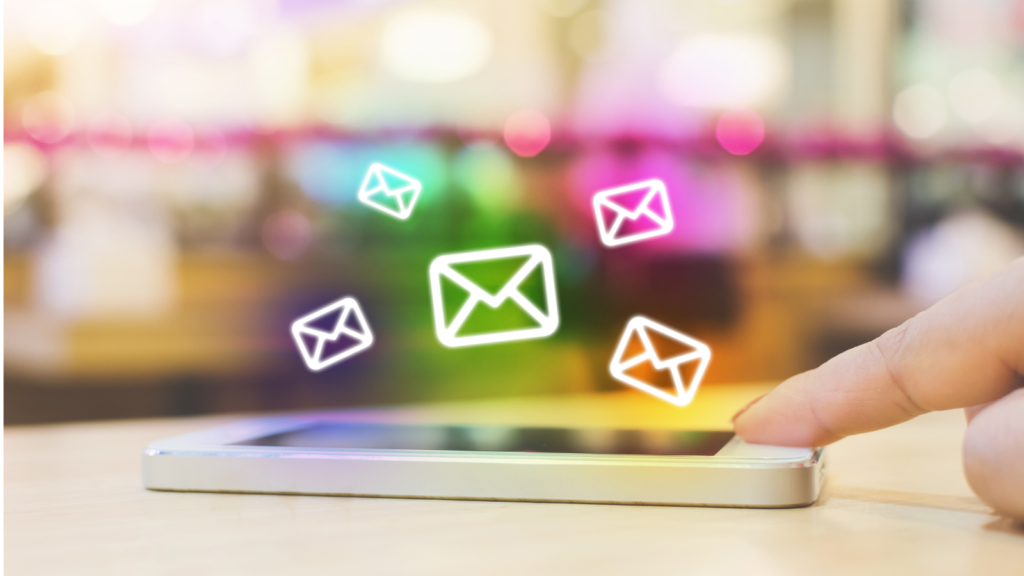
#4 Crafting Customized Messages in Automated Emails
In the vast sea of digital communication, personalisation is the beacon that guides customers to your brand, making them feel seen and valued.
The fourth pillar of mastering email automation is leveraging personalisation at scale, transforming generic emails into personalised messages that speak directly to the individual.
This section delves into the strategies and techniques for infusing your automated emails with a level of personalisation that elevates engagement and nurtures subscriber relationships.
The Essence of Personalization:
Personalisation in email marketing goes beyond addressing a subscriber by their first name.
It’s about tailoring every aspect of your emails to match each recipient’s preferences, behaviours, and needs. This level of personalisation ensures that your messages resonate with subscribers, driving higher open rates, click-through rates, and conversions.
Strategies for Advanced Personalization:
Behavioural Personalization: Use subscriber behaviour, such as past purchases, email interactions, and website activity, to customise email content. For example, recommend products similar to those previously purchased or viewed.
Dynamic Content: Incorporate dynamic content blocks in your emails that change based on the subscriber’s profile or behaviour. This can include tailored product recommendations, content, or offers that align with their interests.
Segmentation for Personalization: Utilize detailed segmentation to group subscribers by specific criteria, such as demographics or engagement level, and tailor your messaging to each segment’s characteristics and preferences.
Implementing Personalization Techniques:
Data Collection and Analysis: Collect and analyse data on your subscribers to understand their preferences and behaviours. Use this data to inform your personalisation strategies.
Email Automation Software: Choose email automation platforms that offer advanced personalisation features, allowing for easy integration of dynamic content and behavioural triggers.
A/B Testing: Continuously test different personalisation elements in your emails, such as subject lines, content, and offers, to determine what resonates best with your audience.
Best Practices for Personalized Email Automation:
Start with a Clear Goal: Define what you want to achieve with each personalised email, improving engagement, driving sales, or increasing subscriber loyalty.
Respect Privacy: Ensure data collection and personalisation efforts comply with privacy regulations like GDPR. Always prioritise subscriber consent and transparency.
Keep It Relevant: Ensure that all personalised content is relevant and adds value to the subscriber. Irrelevant personalisation can lead to disengagement and unsubscribes.
In conclusion, personalisation at scale is a potent tool in your email automation arsenal, capable of transforming your email marketing from a one-size-fits-all approach to a tailored communication strategy.
Focusing on each subscriber’s needs and interests can create more meaningful connections and drive better results for your brand.
#5 Key Metrics to Measure Your Email Automation Impact
In email automation, understanding the impact of your campaigns is pivotal to refining your strategy and achieving your marketing objectives.
The fifth cornerstone of an effective email automation strategy revolves around meticulously measuring and analysing key performance metrics. This section illuminates the critical metrics that provide insights into the success of your email automation efforts, guiding you towards data-driven decisions that enhance your campaigns’ effectiveness.
The Vitality of Metrics in Email Marketing:
Metrics serve as the compass that guides your email marketing strategy, offering a clear picture of what resonates with your audience and where there’s room for improvement.
By closely monitoring these indicators, you can fine-tune your approach and ensure that your email automation campaigns are reaching your audience and truly engaging them.
Essential Email Marketing Metrics:
Open Rate: The percentage of recipients who open your emails. A high open rate indicates compelling subject lines and a strong sender reputation.
Click-Through Rate (CTR): This measures the percentage of email recipients who clicked on one or more links contained in an email. It’s a direct indicator of the relevance and value of your content.
Conversion Rate: The percentage of email recipients who completed a desired action, such as making a purchase or signing up for a webinar, showcasing the effectiveness of your email in driving actions.
Bounce Rate: The rate at which your emails are not delivered to the recipient’s inbox can indicate list health and deliverability issues.
Unsubscribe Rate: The rate at which people opt out of your email list after receiving an email, which can signal the relevance and frequency of your communications.
Leveraging Metrics for Optimization:
Benchmarking Performance: Compare your metrics against industry benchmarks to gauge your campaigns’ relative performance and identify areas for improvement.
Segmented Analysis: Dive deeper by analysing metrics for different email list segments, enabling targeted optimisations for specific groups.
Behavioural Insights: Use metrics to uncover patterns in subscriber behaviour, such as the most engaging content types or optimal sending times, and adjust your strategy accordingly.
Best Practices for Monitoring and Acting on Metrics:
Regular Review: Establish a routine for regularly reviewing your email metrics to stay responsive to changes and trends.
Holistic View: Consider metrics in conjunction to get a comprehensive view of your email performance. For example, a high open rate but low CTR might indicate strong subject lines but less relevant content.
Continuous Testing: Embrace A/B testing to experiment with different elements of your emails, from subject lines to call-to-action buttons, and use metrics to guide your optimisations.
In conclusion, the path to mastering email automation is paved with data.
By prioritising the measurement and analysis of key email marketing metrics, you empower your brand to make informed decisions, continuously refine your email strategies, and, ultimately, drive meaningful engagement and conversions through your automated email campaigns.
#6 Keeping Your Email Automation Workflows Fresh and Effective
In the world of digital marketing, staying static means falling behind.
The sixth essential element in mastering email automation is continuously optimising and refreshing your workflows to maintain relevance and effectiveness. This section provides strategies to ensure your email automation remains dynamic, engaging, and aligned with your evolving marketing goals and audience preferences.
The Imperative of Workflow Optimization:
Email automation workflows are not a ‘set-it-and-forget-it’ component of your marketing strategy. Subscriber needs evolve, market dynamics shift, and content that was once engaging can become stale over time.
Regularly revisiting and refining your workflows is crucial to keep your communication relevant and engaging.
Strategies for Keeping Workflows Vibrant:
Content Refresh: Review and update your automated email content to ensure it remains engaging, accurate, and aligned with your brand’s voice. This includes updating product information, testimonials, and any references to time-sensitive material.
Visual Revamp: The visual appeal of your emails plays a significant role in engaging subscribers. Refreshing email templates, images, and layouts can rejuvenate your campaigns and make them more appealing to your audience.
Segmentation and Personalization Review: As your subscriber base grows and changes, so should your segmentation and personalisation strategies. Reassess your segments regularly to ensure they reflect current subscriber behaviours and preferences.
Automation Logic Adjustment: Review your automated sequences’ logic and triggers to ensure they align with your subscribers’ journey and actions. Updating these can lead to more timely and relevant communications.
Best Practices for Workflow Optimization:
Subscriber Feedback: Incorporate feedback from your audience to understand what works and what doesn’t in your email workflows. Surveys, direct feedback, and engagement metrics can provide valuable insights.
Testing and Learning: Embrace A/B testing as a continuous practice, not just a one-time event. Test different elements of your emails and workflows, from subject lines to send times, and let data drive your decisions.
Data-Driven Decisions: Use analytics to guide your optimisation efforts. Monitor changes in key metrics as you make adjustments to understand their impact. Stay Informed: Keep abreast of email marketing trends and best practices. What worked a year ago might be less effective today.
Being informed helps you to innovate and keep your workflows fresh.
In conclusion, the health and effectiveness of your email automation workflows are contingent on your willingness to reassess and update them regularly. By staying attuned to your audience’s shifting needs and preferences, embracing testing and optimisation, and keeping your content and design fresh, you can ensure that your email automation strategy continues to drive meaningful engagement and business results well into the future.
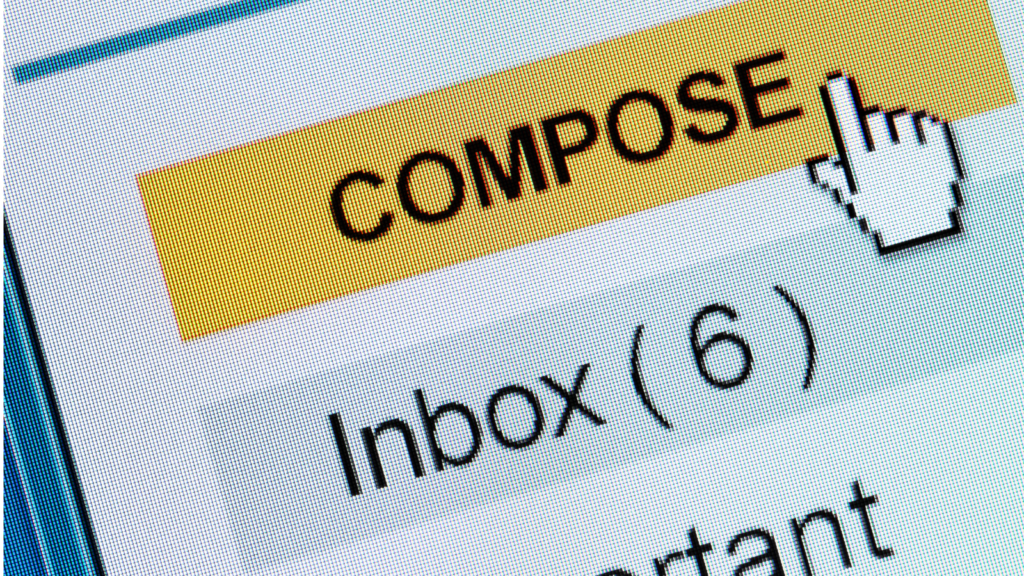
#7 Best Practices for High Engagement
In the digital age, where inboxes are flooded with messages vying for attention, the design of your email can make the difference between being noticed and being overlooked.
The seventh crucial step in mastering email automation involves crafting emails that capture attention and encourage engagement through thoughtful design and compelling content.
This section will guide you through the best practices in designing emails for automation that resonate with your audience and drive your desired actions.
The Importance of Email Design:
A well-designed email goes beyond aesthetics; it enhances readability, reinforces your brand identity, and significantly impacts user engagement.
In a landscape where the average office worker receives 121 emails daily, standout design can be your ally in cutting through the noise.
Design Principles for Engaging Emails:
Mobile Responsiveness: With over half of all emails opened on mobile devices, your email designs must be responsive, ensuring they look great and function well on any screen size.
Clear Hierarchy: Use a clear visual hierarchy to guide subscribers through your email content, using headlines, subheadings, and bullet points to break up text and make your emails easy to scan.
Brand Consistency: Ensure your emails reflect your brand identity by consistently using colours, fonts, and imagery. This strengthens brand recognition and trust among your subscribers.
Engaging Visuals: Incorporate high-quality images, graphics, and videos that are relevant to your content. Visual elements can significantly increase engagement and convey your message more effectively than text alone.
Readable Text: Choose fonts that are easily read on digital screens and ensure your text size is large enough to be readable on small devices. Also, maintain a good contrast between text and background colours to enhance legibility.
Compelling Call-to-Action (CTA): Your CTA is the gateway to your desired subscriber action. Make it visually distinct and compelling, with clear, action-oriented language that motivates clicks.
Best Practices in Email Design:
Simplicity is Key: Keep your designs simple and clutter-free. A clean layout with ample white space enhances user experience and directs focus to the most important elements of your email.
Personalisation Elements: Use dynamic content blocks to personalise visual elements for different audience segments, increasing the relevance and appeal of your emails.
Accessibility: Design your emails with accessibility in mind, ensuring they are inclusive to all subscribers, including those with disabilities. Use alt text for images and ensure your content is navigable and readable by screen readers.
Leveraging Design for Engagement: The ultimate goal of your email design should be to engage and convert your subscribers. Every design element should serve a purpose: to draw the eye to critical information, encourage scrolling, or drive clicks on your CTA.
In conclusion, the design of your automated emails plays a pivotal role in capturing attention, engaging your audience, and driving action.
By adhering to these best practices in email design, you can create visually appealing and highly effective email campaigns that stand out in the crowded inbox and resonate with your subscribers.
#8 Email Compliance
In the intricate dance of email automation, one misstep in compliance can lead to significant consequences, from damaged reputation to hefty fines.
The eighth pivotal aspect of mastering email automation is navigating the complex landscape of email compliance, ensuring that your automated campaigns adhere to legal standards and best practices.
This section will guide you through the foundational principles of email compliance, highlighting key regulations and offering strategies to ensure your email automation efforts remain on the right side of the law.
The Foundation of Email Compliance:
Compliance in email marketing isn’t just about following the rules; it’s about building trust with your audience by respecting their privacy and choices. Regulations like the General Data Protection Regulation (GDPR) in the EU and the CAN-SPAM Act in the US set the groundwork for ethical email practices, focusing on consent, transparency, and the right to privacy.
Key Regulations to Understand:
GDPR: Requires explicit consent for email communication and provides individuals with the right to access their data and request its deletion.
CAN-SPAM Act: This act sets rules for commercial emails, mandates that your emails include a way for recipients to opt out of future emails, and outlines penalties for violations.CASL (Canada’s Anti-Spam Legislation): Similar to GDPR, CASL requires explicit consent for sending commercial electronic messages and includes strict guidelines for obtaining and proving consent.
Strategies for Ensuring Compliance:
Clear Consent Mechanisms: Use clear, straightforward language when requesting consent for email communications. Ensure that the consent mechanism is unambiguous, such as a checkbox that isn’t pre-ticked.
Easy Unsubscribe Options: Include a visible and easy-to-use unsubscribe link in every email. Respecting the recipient’s decision to opt out is a legal requirement and a practice in good email etiquette.
Data Protection and Privacy: Implement robust data protection measures to safeguard subscriber information. Be transparent about how you use subscriber data and provide access to their data upon request.
Best Practices for Compliance:
Regular Training and Updates: Stay informed about changes in email marketing regulations and ensure your team is educated about compliance requirements.
Audit and Documentation: Regularly audit your email practices for compliance and keep detailed records of consent and data handling practices.
Third-Party Compliance: If you use third-party services for your email automation, ensure they comply with relevant regulations. This includes email service providers, CRM systems, and other platforms that handle subscriber data.
Navigating Compliance with Confidence: While the landscape of email compliance might seem daunting, viewing it as an opportunity to reinforce trust with your audience can transform compliance into a competitive advantage.
Transparent and respectful email practices ensure legal compliance and enhance the subscriber experience, fostering loyalty and engagement.
In conclusion, ensuring compliance in your email automation workflows is paramount to avoid legal pitfalls and build and maintain trust with your audience. By adhering to the principles of consent, transparency, and respect for privacy, you can create email campaigns that comply with global regulations and resonate with your subscribers on a deeper level.
#9 The Role of A/B Testing in Refining Your Email Automation
A/B testing, also known as split testing, is a powerful tool in the email marketer’s arsenal, allowing for data-driven decisions that can significantly enhance the effectiveness of your email automation workflows.
The ninth key aspect of mastering email automation involves leveraging A/B testing to systematically evaluate and improve every element of your emails, from subject lines to content and call-to-action.
This section will explore how A/B testing can refine your email campaigns, ensuring they resonate with your audience and achieve your marketing goals.
Understanding A/B Testing:
At its core, A/B testing involves comparing two versions of an email to see which one performs better on a given metric, such as open rates or click-through rates. This methodical approach allows marketers to isolate variables and understand the impact of individual changes on email performance.
Critical Components for Effective A/B Testing:
Clear Hypothesis: Start with a clear hypothesis for what you believe will improve performance. For instance, “Using a question in the subject line will increase open rates.
Variable Isolation: Test one change at a time to ensure you can accurately attribute any differences in performance to the variable being tested.
Significant Sample Size: Ensure your test groups are large enough to provide statistically significant results, giving you confidence in the outcomes of your tests.
Consistent Conditions: Run your A/B tests under similar conditions (e.g., time of day, day of the week) to ensure external factors don’t skew the results.
Popular Elements to Test in Email Automation:
Subject Lines: Test different subject line formats, lengths, and tones to see what drives higher open rates.
Email Content: Experiment with different content styles, lengths, and formats to identify what most effectively engages your audience.
Call-to-Actions (CTAs): Vary the wording, placement, and design of your CTAs to determine what leads to higher click-through and conversion rates.
Send Times: Find the optimal times to send your emails by testing different days of the week and times of the day.
Best Practices in A/B Testing:
Continuous Testing: A/B testing should be an ongoing process, not a one-off event. Continuous testing allows you to keep refining and improving your emails over time.
Use Data to Drive Decisions: Base your marketing decisions on data from your A/B tests, allowing you to craft emails more closely aligned with your audience’s preferences and behaviours.
Iterative Approach: Use the insights gained from each test to inform future tests, creating a continuous improvement cycle.
The Impact of A/B Testing on Email Automation Success:
A/B testing can lead to significant improvements in the effectiveness of your email automation campaigns. By systematically refining your emails based on test results, you can increase engagement, boost conversions, and, ultimately, drive more significant results for your business.
In conclusion, A/B testing is indispensable to a sophisticated email automation strategy. It empowers marketers to make informed decisions, backed by data, to fine-tune their emails for maximum impact.
By embracing a culture of testing and optimization, you can ensure that your email automation workflows always evolve to meet your audience’s needs and your business’s goals.
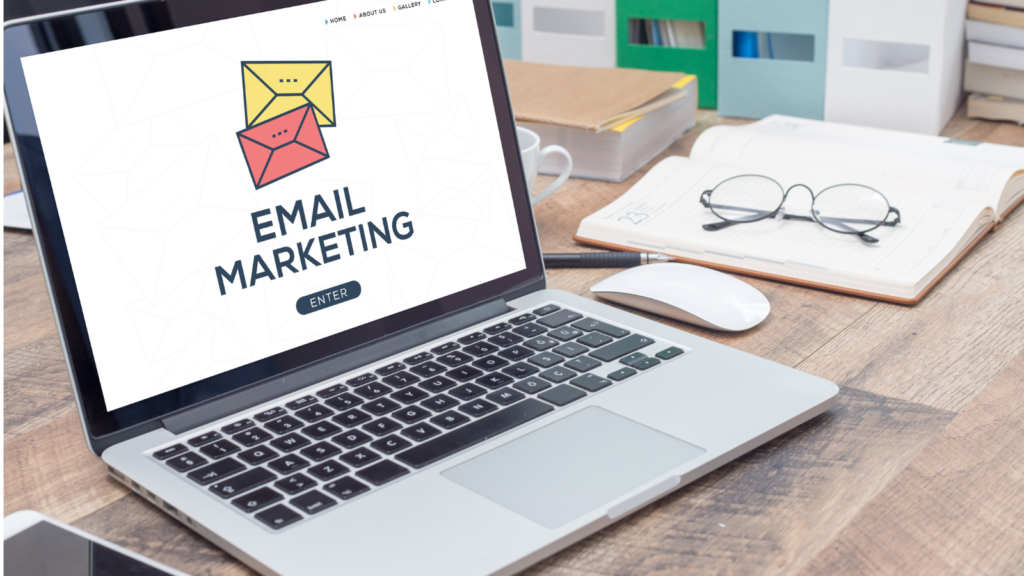
#10 Integrating Email with Your Multi-Channel Marketing Strategy
Email automation is a critical thread in digital marketing, interwoven with various other channels to create a cohesive and comprehensive marketing strategy.
The tenth and final key to mastering email automation is its seamless integration with other marketing channels, such as social media, content marketing, and offline efforts.
This section explores the symbiotic relationship between email automation and multi-channel marketing, providing insights on harmonising these channels for amplified results and a unified brand experience.
The Importance of Channel Integration:
Consumers interact with brands across multiple touchpoints in today’s fragmented digital landscape. A well-integrated marketing strategy ensures that your message is consistent and complementary across all channels, enhancing brand recognition and providing a seamless customer journey.
Strategies for Effective Integration:
Unified Messaging: Ensure the messaging and branding across your emails, social media posts, blog content, and other channels are aligned. This consistency reinforces your brand identity and amplifies your message.
Leveraging Data Across Channels: Use insights and data from your email campaigns to inform strategies in other channels and vice versa. For example, a high-performing email topic could be expanded into a blog post or social media campaign.
Cross-Promotion: Use each channel to promote and drive traffic to the others. Include social media links, mention your email newsletter on your social media profiles, and use offline events to grow your email list.
Enhancing Customer Experience with Integration:
Personalisation Across Touchpoints: Apply the personalisation techniques in your email campaigns across other channels to create a cohesive and personalised customer experience.
Customer Journey Mapping: Understand your customers’ path from awareness to conversion and beyond. Use this insight to create integrated campaigns that guide them through the journey, with each channel playing its specific role.
Best Practices for Multi-Channel Integration:
Consistent Brand Voice: Maintain a consistent brand voice and visual identity across all channels to strengthen brand recall and loyalty.
Responsive and Adaptive Content: Ensure your content is adaptable and responsive across devices, platforms, and channels, catering to each unique format and audience.
Feedback Loops: Establish mechanisms to gather and analyse feedback from all channels, allowing for a more responsive and adaptable multi-channel strategy.
In conclusion, integrating your email automation efforts with your broader multi-channel marketing strategy is essential for delivering a unified and compelling brand message.
By ensuring coherence across channels, leveraging cross-channel insights, and maintaining a consistent customer experience, your brand can build stronger relationships with your audience, drive engagement, and achieve your marketing objectives holistically.
Conclusion
In conclusion, mastering email automation is a multi-faceted journey that requires careful attention to strategy, personalisation, compliance, integration, and continuous optimisation.
Through this comprehensive guide, we’ve explored the essential strategies and best practices that can elevate your email automation campaigns from simple communications to powerful conduits of engagement and conversion.
From the selection of the right automation tools tailored to your needs to the art of crafting personalised and timely messages triggered by user actions, from the meticulous adherence to email compliance laws to the integration of email with your broader multi-channel marketing strategy, and not forgetting the critical role of A/B testing in refining every element of your emails – each aspect plays a pivotal role in the success of your email marketing efforts.
The landscape of email marketing is ever-evolving, and staying ahead requires adherence to best practices and a willingness to innovate and adapt. By embracing the principles outlined in this guide, you’re well on your way to creating email automation workflows that resonate with your audience and drive measurable results for your business.
As you embark on or continue to refine your email automation journey, remember that the ultimate goal is to foster a deeper connection with your audience, providing them with value at every touchpoint. We encourage you to experiment with the strategies discussed, continuously test and learn from your campaigns, and always keep your audience’s needs and preferences at the heart of your efforts.
Start today by reviewing your current email automation practices and identifying one area for improvement. Mastering email automation is ongoing, but every step is towards greater engagement and success.
FAQs
Q1: What is email automation, and why is it important for marketing?
A1: Email automation involves sending out emails automatically, based on predetermined triggers and schedules, to engage with your audience in a timely and relevant manner. It’s crucial for marketing as it helps personalise communication at scale, improve efficiency, and drive conversions.
Q2: How can I choose the right email automation tool for my business?
A2: Select an email automation tool that fits your business needs by considering ease of use, integration capabilities, automation features, personalisation options, and analytics. Popular tools include Mailchimp, HubSpot, and Salesforce Marketing Cloud.
Q3: What are some effective strategies for segmenting my email list?
A3: Segment your email list based on demographic information, subscriber behaviour, purchase history, and engagement levels. Effective segmentation allows for more targeted and relevant email campaigns, improving engagement and conversion rates.
Q4: How does personalisation improve email automation campaigns?
A4: Personalization enhances email automation by tailoring messages to meet individual subscriber needs and preferences, leading to higher open and click-through rates. Techniques include using the recipient’s name, personalised subject lines, and content tailored to their interests and behaviours.
Q5: Why is A/B testing important in email automation?
A5: A/B testing allows you to compare two versions of an email to see which performs better. This helps you make data-driven decisions to optimise your email campaigns for higher engagement and conversions.
Q6: How can I ensure my automated emails comply with GDPR regulations?
A6: Ensure compliance by obtaining explicit consent to email your subscribers, providing a clear unsubscribe option in every email, and adhering to data protection standards. Regularly review and update your practices to stay in line with current regulations.
Q7: How does integrating email automation with other marketing channels benefit my strategy?
A7: Integrating email automation with other marketing channels, such as social media, content marketing, and offline efforts, creates a cohesive and unified marketing strategy, enhancing brand consistency and providing a seamless customer experience across all touchpoints.

